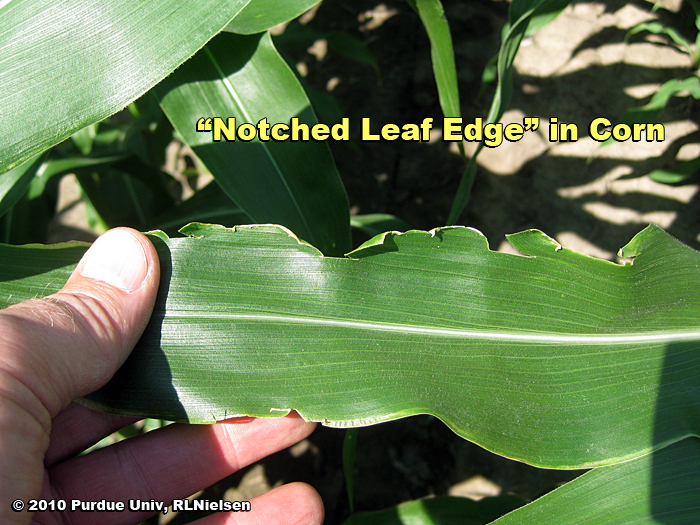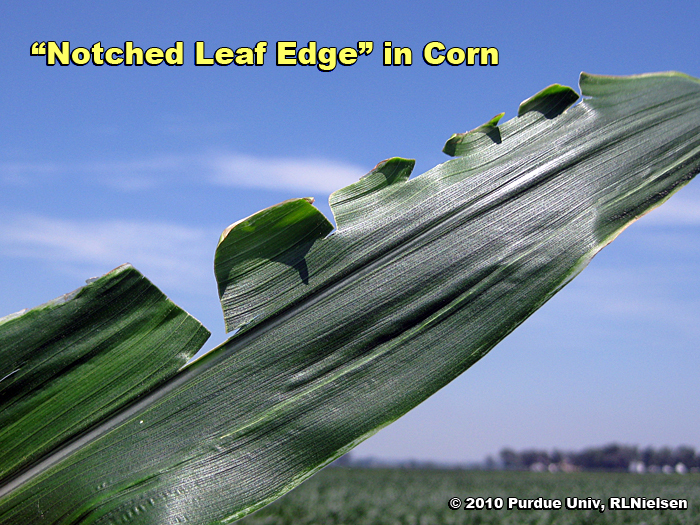July 2020
URL: http://www.kingcorn.org/news/timeless/NotchedLeaf.html
Notched Leaf Edges in Corn
R.L. (Bob) Nielsen
Agronomy Dept., Purdue Univ.
West Lafayette, IN 47907-2054
Email address: rnielsen at purdue.edu
Twitter: @PurdueCornGuy
Sometimes the notching occurs only on one leaf edge with the other normal, other times the notching occurs on both leaf edges. Typically, only a few of the leaves are affected. The symptom seems to be most commonly reported on corn that is well into its rapid growth phase (sometime after leaf stage V7).
While it is tempting to blame this symptom on the feeding activities of certain insects (e.g., armyworm, stinkbug, corn borer), the symptomology is different. Some have also blamed nutrient deficiencies (e.g., calcium) for the symptom.
Feedback from some of my seed industry colleagues indicates that the ragged leaf edge symptom is a genetic characteristic that seems to express itself during periods of rapid crop development. The thought is that, for some unknown reason, the edges of one or more leaves deep down in the whorls of plants become "sticky" and so the leaves cannot unwrap normally during their continued expansion from the whorl. The leaf edges become damaged as the leaves continue to unwrap; thus leading to the ragged or notched leaf edge symptom when fully emerged from the whorl. The "sticky" leaf theory behind the "notched leaf edge" symptom may be similar to that proposed for the "twisted whorl" symptom (Nielsen, 2019).
This symptom appears to be a simple genetic oddity with little consequence to further development of the crop canopy. The percent loss in photosynthetic leaf represented by these ragged leaf edges is minor and likely has no effect on ultimate grain yield of the plants.
Notched leaf edge symptom in V9 corn. Click on images to view larger versions.
Related Reading
Nielsen, RL (Bob). 2019. Yellow Tops and Twisted Whorls in Corn. Corny News Network, Purdue Univ. [online] http://www.kingcorn.org/news/timeless/TwistedWhorls.html [URL accessed July 2020].



